Cliffton is a longtime San Francisco resident and artist, with a warm smile and a knack for storytelling. He’s also a participant at our Rosa Parks Pop-up Pantry, which he walks to with his good friend Sharon. They pick up groceries together, go back to one of their homes, and then plan their meals for the upcoming week (“we’re in the kitchen pretty much all the time,” says Cliffton). Though he’s not an SF native – he moved to California by way of Greenville, Mississippi – Cliffton has lived in the Western Addition since 1981. Needless to say – the neighborhood has changed dramatically.
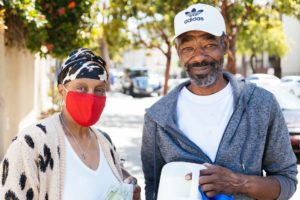
Through art, youth outreach, and food, Cliffton is determined to continue building community and bringing together Black folks in the Western Addition and the Fillmore who have been displaced and neglected by the city. He’s also passionate about making sure Black youth in the community know the storied history of the Fillmore and Western Addition – “we have a lot of Black history right in front of our face.” Most recently, he worked as a sketch artist for a mural that can be found at the Buchanan Street Mall, and we also learned he will also be working on the city’s Juneteenth celebration. Here’s an excerpt from our conversation, condensed and edited for clarity.
Food Bank: Can you tell us a little more about your advocacy work?
Cliffton: I’m using my art as an activist in my community to help my people. It’s like I’m reconnecting with something. I want to know about the history of the community that I’m in. I want to bring those stories to life. And by me doing art, I can do that. I can bring those stories to light and bringing those stories to light helps a young black man, a young black lady, a young black girl, a young black boy.
FB: Right. You mentioned you work with some organizations like Citizen Film doing youth outreach, and you’re working on another art exhibit that’s going to debut in 2023. Can you tell us a little about that?
Cliffton: So, my art is dealing with trying to help the youth. I want the kids to research the history of the Fillmore during the jazz era, in the ’40s and ’50s. And see, by them researching their own history, they’re educating themselves about their people. It’s educational for the kids that’s doing the research, it’s educational for the community to know about the past, and it’s also educational for the passerby to see that history. We have a rich history.
FB: That sounds like it’s going to be not only an informative exhibit, but it’s really going to bring to life the history of the Fillmore.
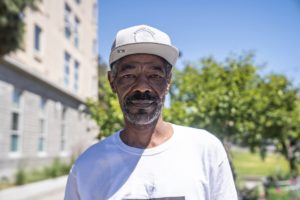 Cliffton: My biggest thing is for my people to get educated. What you know, they can’t take that away from you. If you want to stay in your community, you’ve got to find a way. Educate yourself on what City Hall is doing for your community, what you can do for your community. I’m helping set up the Juneteenth celebration [for the city]. I have a booth at the Juneteenth celebration, and I’ll be selling my t-shirts and stuff, and I will also bring a good portion of my artwork up there to display.
Cliffton: My biggest thing is for my people to get educated. What you know, they can’t take that away from you. If you want to stay in your community, you’ve got to find a way. Educate yourself on what City Hall is doing for your community, what you can do for your community. I’m helping set up the Juneteenth celebration [for the city]. I have a booth at the Juneteenth celebration, and I’ll be selling my t-shirts and stuff, and I will also bring a good portion of my artwork up there to display.
FB: That’s awesome, I’m really looking forward to it. What does Juneteenth mean to you?
Cliffton: Juneteenth means to me, freedom, life, happiness, and loving one another. I really can’t express what the heart feels…. freedom, freedom, freedom, that’s what the heart pumps.
FB: That’s beautiful. Thank you for sharing that. Now, just to bring it back to food, what are some of your memories associated with food?
Cliffton: Cooking brings back memories of my mother when I was young, in the kitchen with her and my sisters and brothers and sitting around preparing food. We’re in conversation, communicating, laughing, joking with each other and having fun, learning how to cook, you know? So, when I’m cooking now, that’s what it brings back. When we’re cooking and the kids are all in there, and we’re sitting around, preparing the meal and cooking, everybody got that conversation going, everybody got a memory going. They remember this, they remember that and we’re all laughing.
FB: Love that. Thank you for painting that picture. My final question – what does food mean to you?
Cliffton: Food brings you together, you know? And especially when you’re a good-hearted person and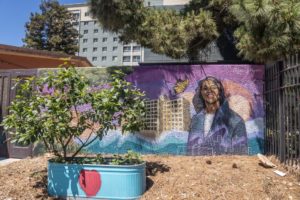 you’ve got good people around you, when you’re cooking, and you got people over and everything… take the food away, you got chaos. If you got a group of people together, bring the food. Ain’t nobody fussing. You can’t fuss because you’re eating. It’s something nourishing for the body, and the body won’t allow you to be negative at that moment because it’s food. A good hefty stomach makes you want to kick back, relax, take your shoes off and just be Black.
you’ve got good people around you, when you’re cooking, and you got people over and everything… take the food away, you got chaos. If you got a group of people together, bring the food. Ain’t nobody fussing. You can’t fuss because you’re eating. It’s something nourishing for the body, and the body won’t allow you to be negative at that moment because it’s food. A good hefty stomach makes you want to kick back, relax, take your shoes off and just be Black.
Nourish the Neighborhood
With groceries taken care of, Cliffton invests energy into his community – “we have other important things to put our finances toward, you know?” It’s an important reminder that food is the basis for so much more. Healthy groceries fuel the artists, activists, community organizers, mentors, and others who shape our neighborhoods into the vibrant, dynamic spaces that we know and love.
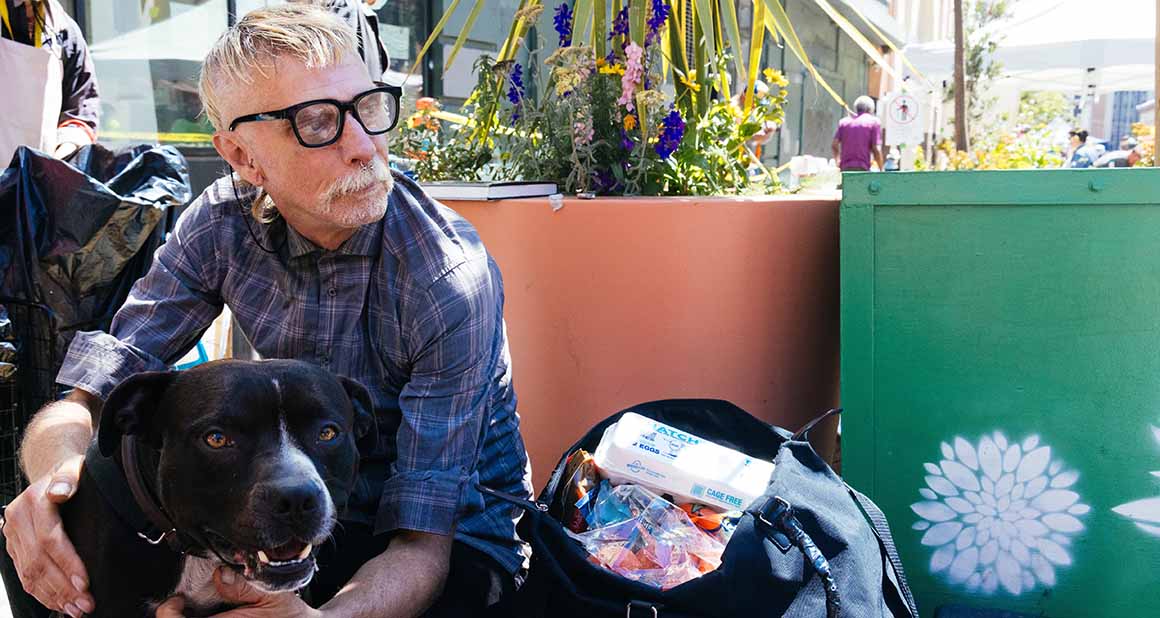
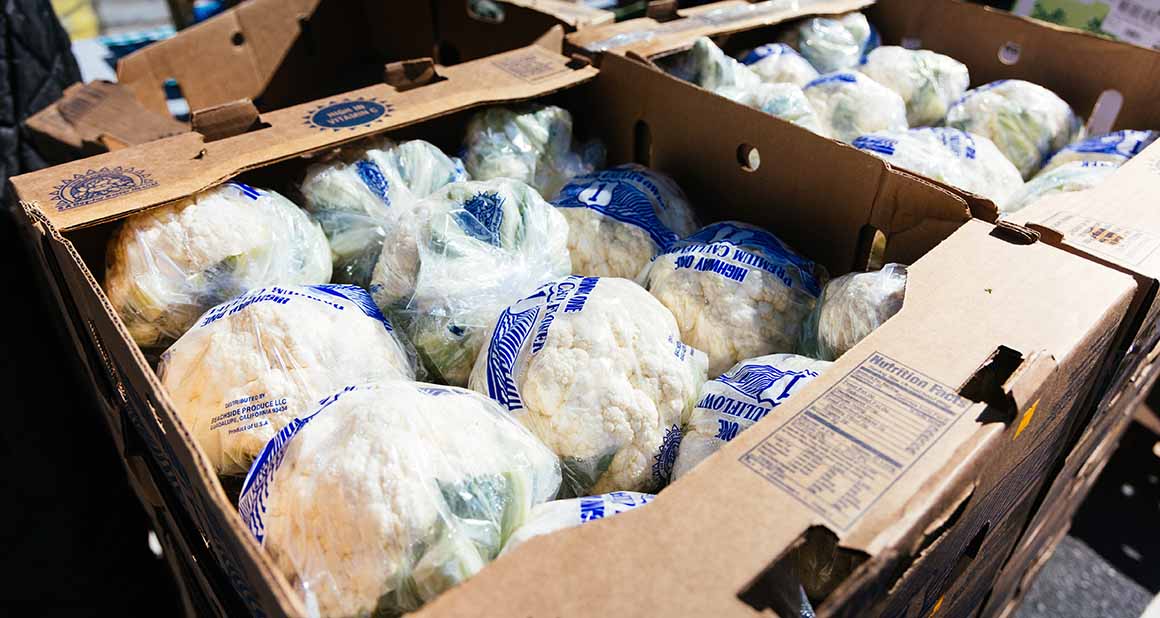 During this period, he rescued le Roi — emaciated and severely abused — from the streets. Nursing le Roi back to health became his mission. “I put him on a high protein, high caloric, high fat diet,” Todd said. With the money the pantry saved him on groceries, he was able to buy quality dog food. Fully recovered, le Roi now “picks up his own leash and walks himself. He plays basketball and body surfs,” Todd beamed.
During this period, he rescued le Roi — emaciated and severely abused — from the streets. Nursing le Roi back to health became his mission. “I put him on a high protein, high caloric, high fat diet,” Todd said. With the money the pantry saved him on groceries, he was able to buy quality dog food. Fully recovered, le Roi now “picks up his own leash and walks himself. He plays basketball and body surfs,” Todd beamed.

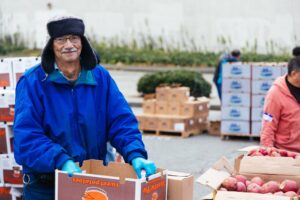 Volunteering with the Food Bank in May 2020 was really a no-brainer for Mitchell. As a retired government worker for various public health agencies, he already had a deep knowledge of epidemics and health outbreaks. Combined with the driving force of his faith, Mitchell knew he wanted to help his community out during a difficult and pivotal time.
Volunteering with the Food Bank in May 2020 was really a no-brainer for Mitchell. As a retired government worker for various public health agencies, he already had a deep knowledge of epidemics and health outbreaks. Combined with the driving force of his faith, Mitchell knew he wanted to help his community out during a difficult and pivotal time.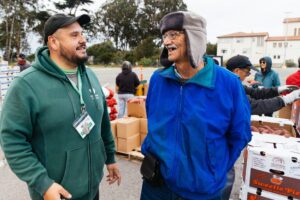
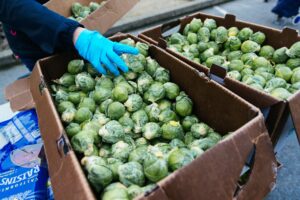 a pallet and put it on the table. And I will be 80 years old in July!”
a pallet and put it on the table. And I will be 80 years old in July!”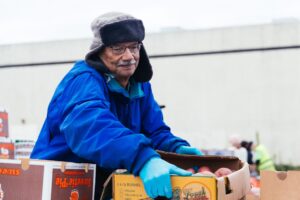 way to ensure we can continue meeting the immediate needs of our neighbors while strategically planning for more long-term, holistic solutions in the future. Thank you, Mitchell, for your dedication to ending hunger in San Francisco and Marin! We can’t do this work without supporters like you.
way to ensure we can continue meeting the immediate needs of our neighbors while strategically planning for more long-term, holistic solutions in the future. Thank you, Mitchell, for your dedication to ending hunger in San Francisco and Marin! We can’t do this work without supporters like you.
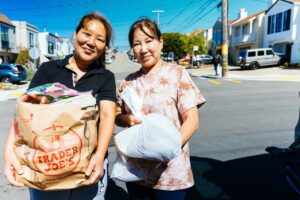
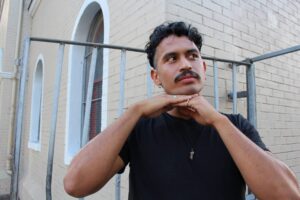
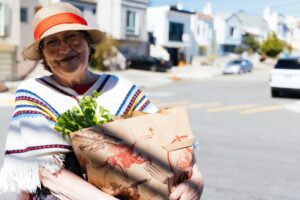
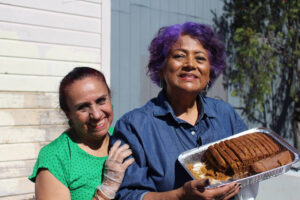
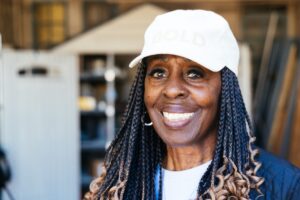
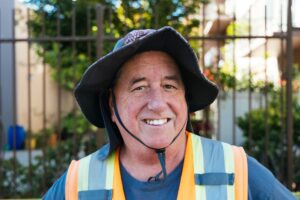
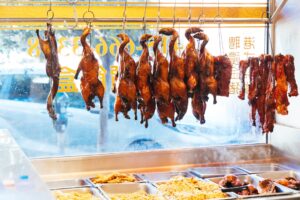 below. Next door, another restaurant dishes up steaming, juicy xiao long bao.
below. Next door, another restaurant dishes up steaming, juicy xiao long bao.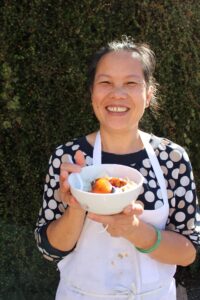 down restaurants all over the Bay Area and put her and thousands of others out of work. As a single parent raising a high schooler, putting another daughter through college, and helping support her eldest daughter at the time, Ming needed some support of her own. Ever since, these weekly groceries from the pantry near her work have remained a crucial time- and money-saver for this busy mom.
down restaurants all over the Bay Area and put her and thousands of others out of work. As a single parent raising a high schooler, putting another daughter through college, and helping support her eldest daughter at the time, Ming needed some support of her own. Ever since, these weekly groceries from the pantry near her work have remained a crucial time- and money-saver for this busy mom. 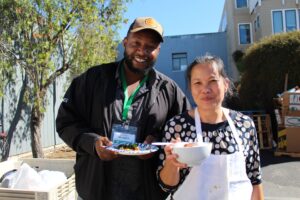 volunteers make their way over, dishing up portions buffet-style and gathering around the foldout table. Turns out, it’s not only Ming’s family that she’s bringing together over food.
volunteers make their way over, dishing up portions buffet-style and gathering around the foldout table. Turns out, it’s not only Ming’s family that she’s bringing together over food.
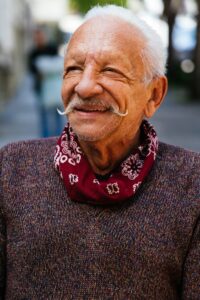 40 years, an activist, and a pantry participant since 2020 in his neighborhood of the Western Addition. He’s also one of roughly 101,000 CalFresh (known as SNAP federally) recipients in San Francisco who saw their grocery budget decimated overnight. This is due to the federal government’s decision to cut emergency allotments, which boosted CalFresh benefits by an average of $160 for recipients in San Francisco during the pandemic. That’s a loss of nearly $12 million a month in food assistance for our neighbors.
40 years, an activist, and a pantry participant since 2020 in his neighborhood of the Western Addition. He’s also one of roughly 101,000 CalFresh (known as SNAP federally) recipients in San Francisco who saw their grocery budget decimated overnight. This is due to the federal government’s decision to cut emergency allotments, which boosted CalFresh benefits by an average of $160 for recipients in San Francisco during the pandemic. That’s a loss of nearly $12 million a month in food assistance for our neighbors.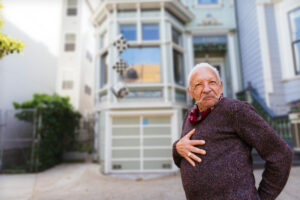 For Miguel, his CalFresh benefits were a supplemental support that helped him stretch his budget and extend a little kindness to other friends who were struggling during the throes of the pandemic. “I was able not only to get things for myself, but I was able to invite friends to get food with me so we can have dinner together. I did it with two friends, maybe every two weeks. Eating alone is not really the best thing. Having company and being able to provide something a little extra, that was very nice. It really made a difference for me and my friends.”
For Miguel, his CalFresh benefits were a supplemental support that helped him stretch his budget and extend a little kindness to other friends who were struggling during the throes of the pandemic. “I was able not only to get things for myself, but I was able to invite friends to get food with me so we can have dinner together. I did it with two friends, maybe every two weeks. Eating alone is not really the best thing. Having company and being able to provide something a little extra, that was very nice. It really made a difference for me and my friends.”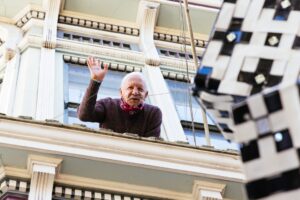 leave food banks to pick up the slack, it’s essential that the Food Bank maintains access to the fresh produce, proteins, and grains that 53,000 neighbors rely on weekly to nourish themselves. “The benefit is greater than just food,” Miguel explained to us. “At my age, I don’t think there’s any stigma – I encourage other people to apply for these services. I have diabetes, so I have to be careful about what I’m eating. And besides the food, I can use the money [I save] on other things that are beneficial for my health or enjoyment. It’s a ripple effect; it magnifies your life in all these positive ways.”
leave food banks to pick up the slack, it’s essential that the Food Bank maintains access to the fresh produce, proteins, and grains that 53,000 neighbors rely on weekly to nourish themselves. “The benefit is greater than just food,” Miguel explained to us. “At my age, I don’t think there’s any stigma – I encourage other people to apply for these services. I have diabetes, so I have to be careful about what I’m eating. And besides the food, I can use the money [I save] on other things that are beneficial for my health or enjoyment. It’s a ripple effect; it magnifies your life in all these positive ways.”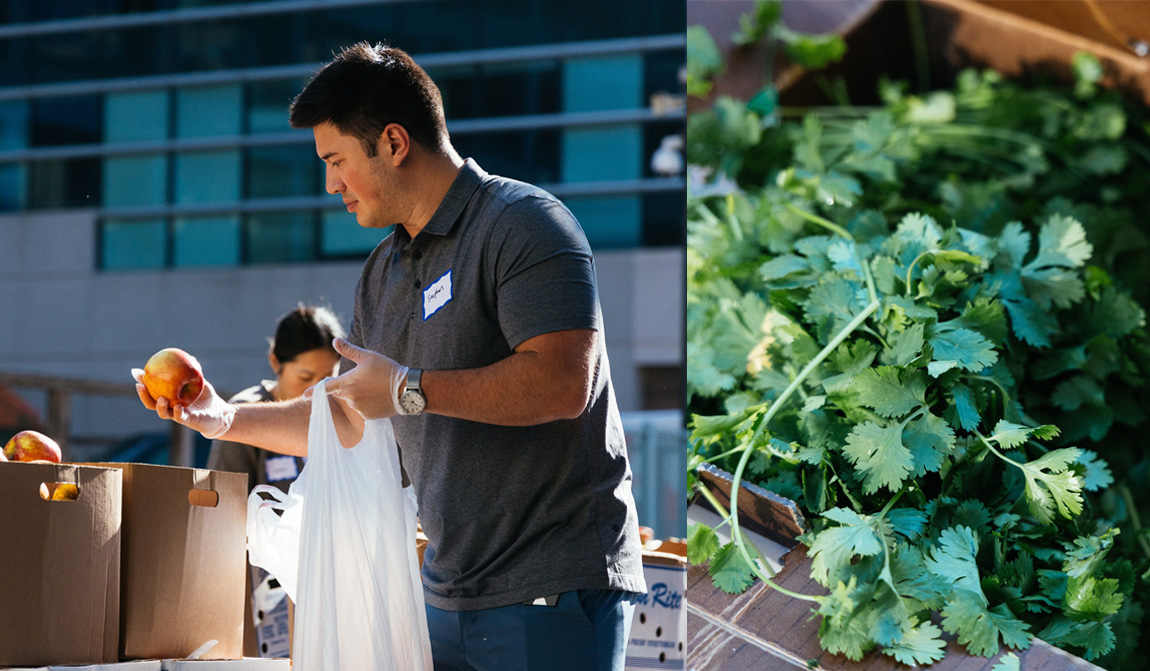
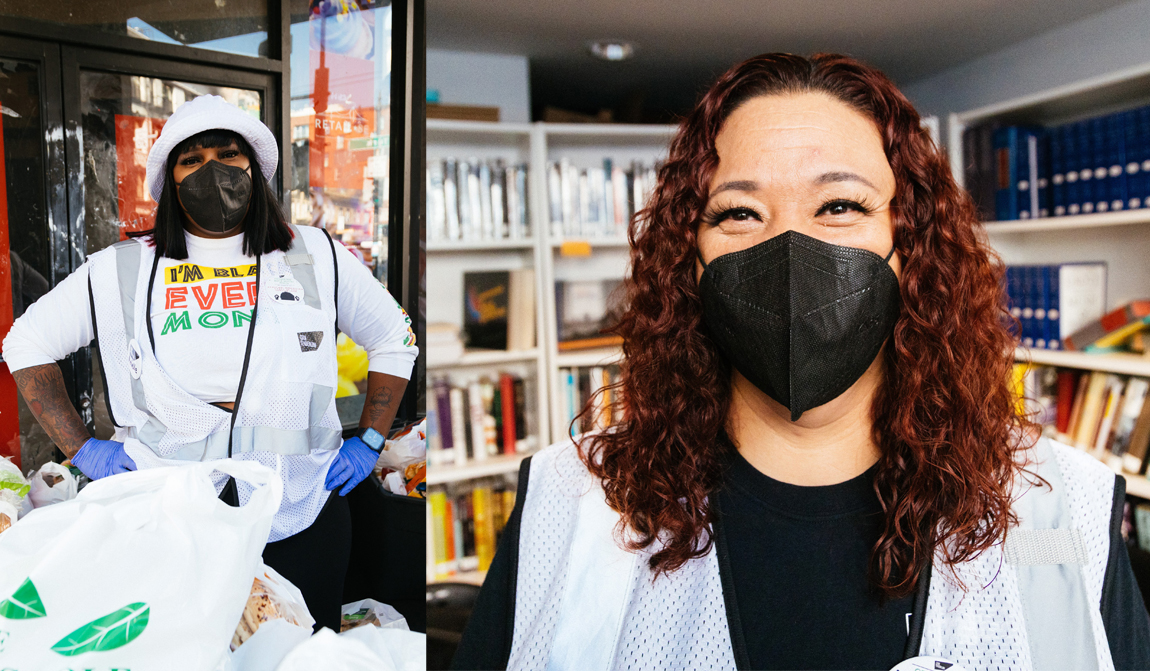
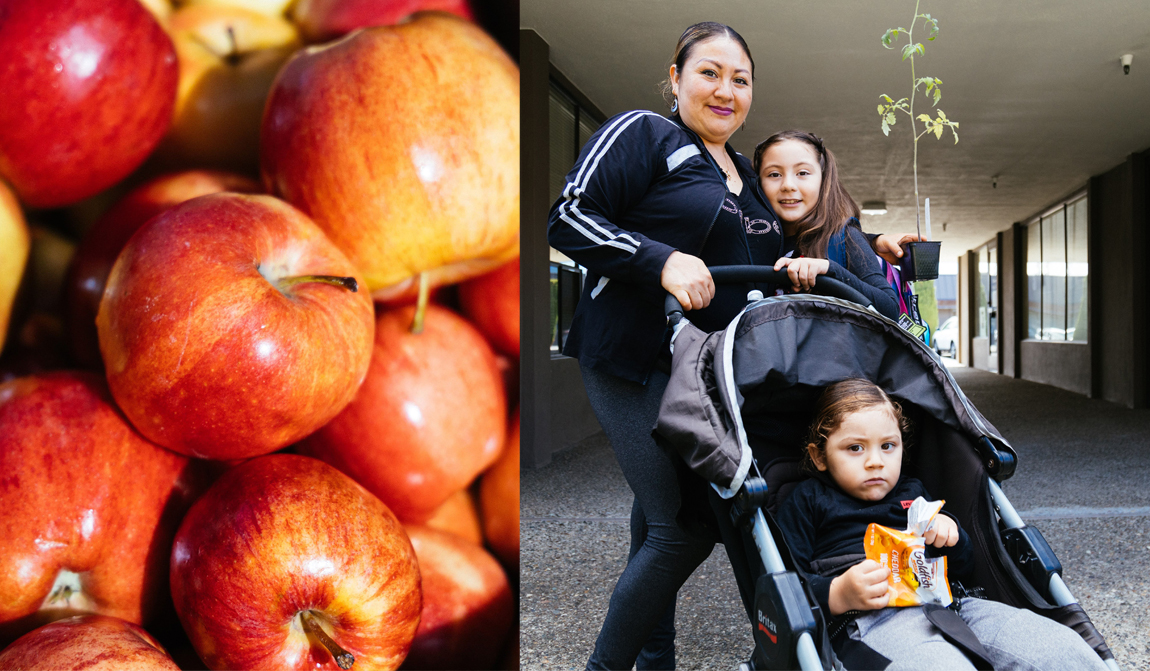
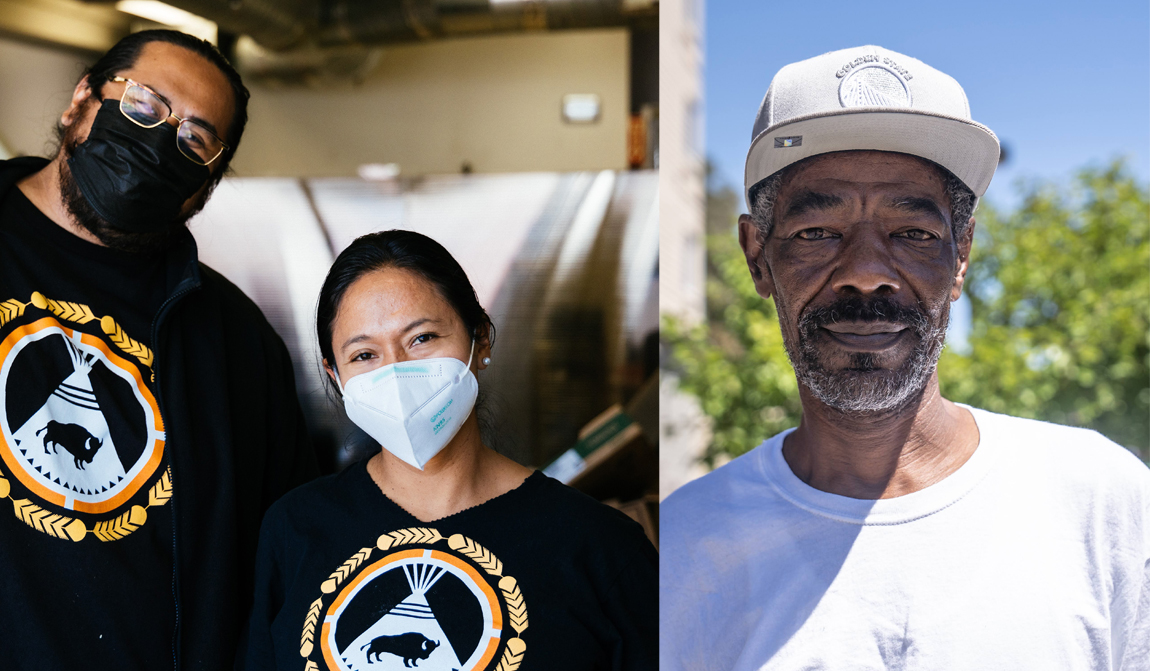
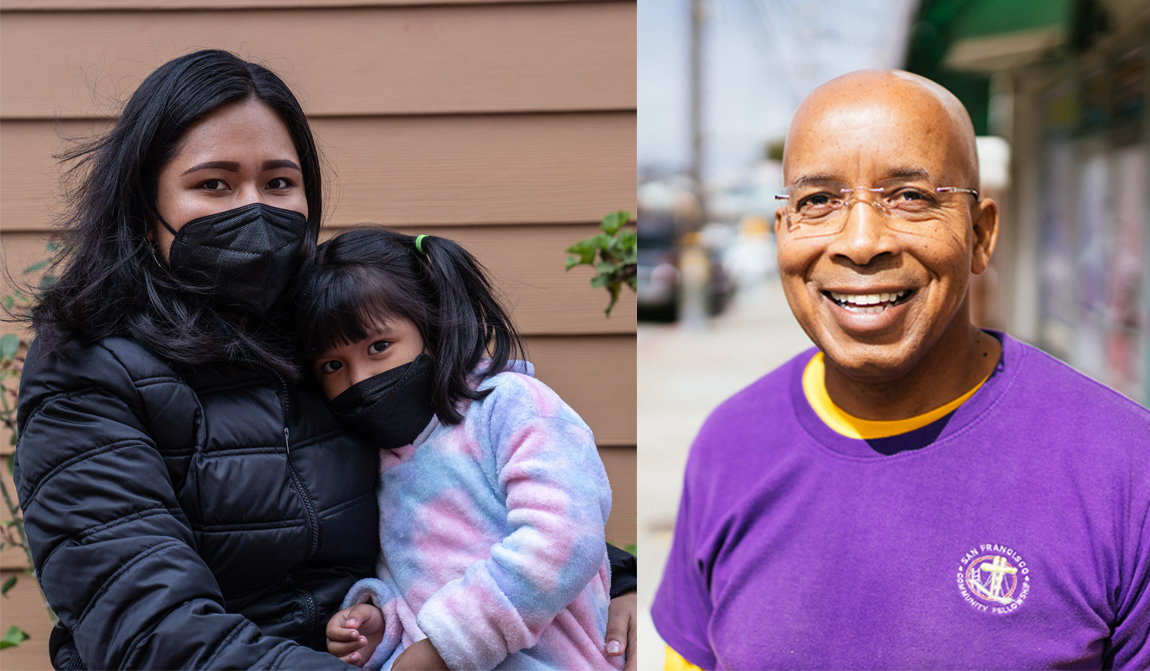
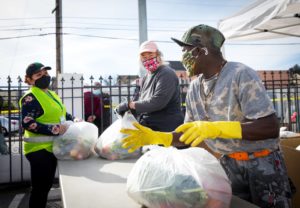
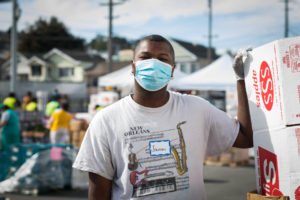
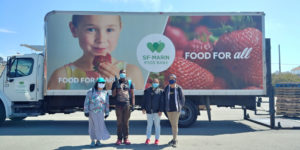
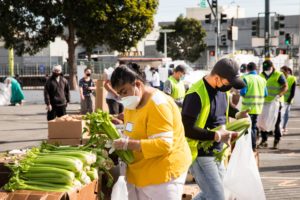
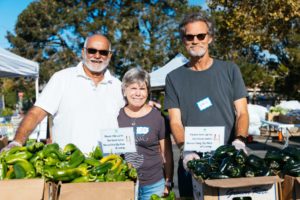 COVID Pantry Pivots
COVID Pantry Pivots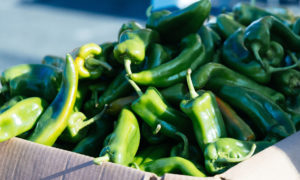
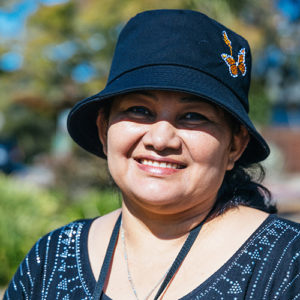

 Cliffton: My biggest thing is for my people to get educated. What you know, they can’t take that away from you. If you want to stay in your community, you’ve got to find a way. Educate yourself on what City Hall is doing for your community, what you can do for your community. I’m helping set up the
Cliffton: My biggest thing is for my people to get educated. What you know, they can’t take that away from you. If you want to stay in your community, you’ve got to find a way. Educate yourself on what City Hall is doing for your community, what you can do for your community. I’m helping set up the  you’ve got good people around you, when you’re cooking, and you got people over and everything… take the food away, you got chaos. If you got a group of people together, bring
you’ve got good people around you, when you’re cooking, and you got people over and everything… take the food away, you got chaos. If you got a group of people together, bring 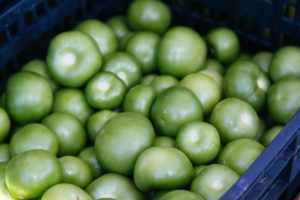 CROps is an effort to provide more culturally responsive foods and more choice for our Black and Latinx participants, By supplying culturally relevant items people like and know how to use in the kitchen, this pilot hopes to increase satisfaction with the food choices offered,
CROps is an effort to provide more culturally responsive foods and more choice for our Black and Latinx participants, By supplying culturally relevant items people like and know how to use in the kitchen, this pilot hopes to increase satisfaction with the food choices offered, 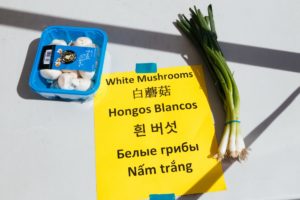
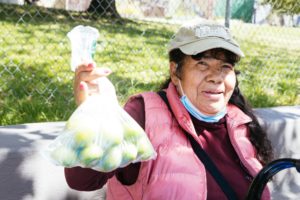 We also caught up with Maria at Cesar Chavez Pop-up Pantry, who is recovering from an operation on her stomach to remove a tumor: “I can’t eat out – my stomach is really fragile from the operation. Street food makes me sick. So, I need to cook at home, for my health.” New food and spice choices, like tomatillos and oregano, allow Maria to make comforting foods that aid her recovery.
We also caught up with Maria at Cesar Chavez Pop-up Pantry, who is recovering from an operation on her stomach to remove a tumor: “I can’t eat out – my stomach is really fragile from the operation. Street food makes me sick. So, I need to cook at home, for my health.” New food and spice choices, like tomatillos and oregano, allow Maria to make comforting foods that aid her recovery. 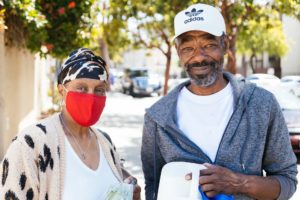
Share